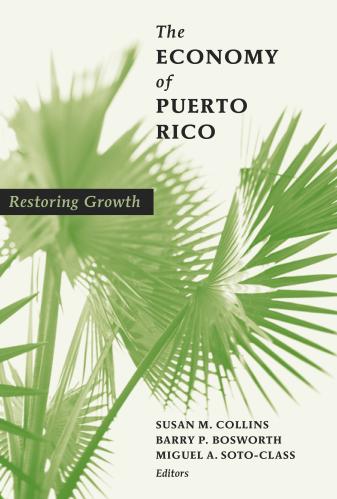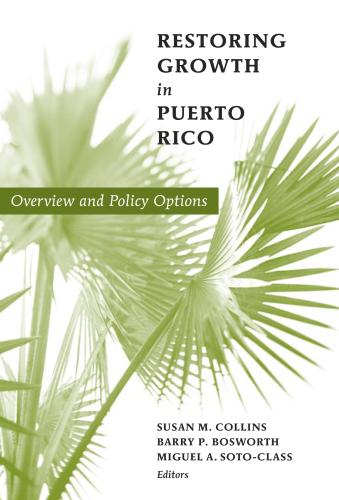Studies in this week’s Hutchins Roundup find that fintech firms that entered the UK’s “regulatory sandbox” had a higher probability of raising capital, spillovers from U.S. monetary policy into foreign stock markets primarily move through production linkages, and more.
Want to receive the Hutchins Roundup as an email? Sign up here to get it in your inbox every Thursday.
Entering the UK’s regulatory ‘sandbox’ improves fintech companies’ access to capital
Raising capital can be an obstacle for fintech companies trying to expand, with investors wary of an uncertain regulatory environment and untested products. In 2015, the UK developed the world’s first “regulatory sandbox,”—allowing a limited set of firms to operate outside the regular regulatory framework under regulatory supervision and guidance—to help young fintechs test their products in a controlled environment and identify any risks. Using data on UK fintechs from 2014 to 2019, Giulio Cornelli of the Bank for International Settlements and co-authors find that entering the sandbox increases a firm’s probability of raising capital by 50% relative to firms that did not enter, and the amount of money raised after entering increases by 15% on average. These gains, the authors argue, come primarily from reduced asymmetric information for investors— acceptance into the sandbox signals quality—and lower costs of regulatory uncertainty, as firms in the sandbox are guided through legal challenges by case officers. The firms benefitting most from the sandboxes, for example, are those that are typically more opaque to investors and that lack a CEO with a background in financial law. The success of this program suggests that sandboxes are an effective and safe way to spur financial innovation, the authors say.
US monetary policy affects foreign stock market returns through trade integration
With stock market data from 26 countries and input-output data from 54 sectors across 43 countries, Julian di Giovanni and Galina Hale of the New York Fed find that a one percentage point expansionary surprise in U.S. monetary policy increases global average monthly stock returns by 0.12 percentage points. Moreover, 80% of the increase in non-U.S. stock returns is attributable to production linkages, a measure of globalization and trade integration. U.S monetary policy, they find, has a direct effect primarily on U.S. industries and then propagates to the rest of the world through these global production networks. While it is unsurprising that U.S. monetary policy has a stronger direct effect on U.S. stocks, the study highlights just how much of a role globalization plays in transmitting financial shocks, the authors say.
IMF growth projections are systematically positively biased
Is the International Monetary Fund (IMF) systemically overly optimistic about economic growth in countries to which it lends money on the promise of changes in fiscal and monetary policies? Three IMF economists—Kareem Ismail, Roberto Perrelli, and Jessie Yang—say, “Yes.” Using IMF’s growth forecast errors between 2003 and 2017, the authors find that both planned and realized fiscal policy changes and external adjustments are associated with overestimating economic growth, or optimism bias. Larger planned adjustments are also associated with greater optimism bias. Moreover, in contrast to other work, the authors find that this bias persisted after the Great Financial Crisis. The authors caution that, with numerous countries on a path to fiscal adjustments in a post-COVID world, IMF projections should be considered with some skepticism.
Chart of the week: Percent of people teleworking due to pandemic is decreasing, but remains large
Quote of the week:
“My modal outlook is for a continued expansion, but at a slower pace than we had right after we came back from the shelter in place orders, and that’s really a reaction to two things. First of all, we had to ramp up to get back into activity and that caused a surge in growth, so a natural slowing is expected. But I also see the rising caseloads and we know that, voluntarily, people are going back into their homes; they’re less confident in going out when caseloads rise, and so I would expect some further slowing as we go forward consistent with the rising caseloads. Same thing we’ve been hearing for a while, [the] top priority is [to] get the virus under control. The economy goes where the virus goes,” says Mary Daly, President of the San Francisco Fed.
“[F]iscal support is really critical. When Congress came out with the CARES Act, we saw immediately how that cushioned households and small businesses and helped them get through the virus. The virus is still with us, so more is needed…. If we don’t get that, then this is a mini fiscal cliff, maybe even a major fiscal cliff, for the individuals who are experiencing that. … This is people who are out of work, who can’t find jobs because jobs aren’t available yet and their unemployment insurance runs out, then they can’t pay their rent and maybe they get evicted. And small businesses who run out of their PPP funding and need more additional support to weather the virus, so this is certainly going to impact those households, those businesses. Ultimately it impacts our aggregate economy, and the economy would have slower growth in the absence of fiscal [policy] than it would have if we had a long and strong bridge that fully and completely gets us through the crisis.”
The Brookings Institution is committed to quality, independence, and impact.
We are supported by a diverse array of funders. In line with our values and policies, each Brookings publication represents the sole views of its author(s).











Commentary
Hutchins Roundup: Regulatory ‘sandboxes’, foreign stock markets, and more
November 12, 2020